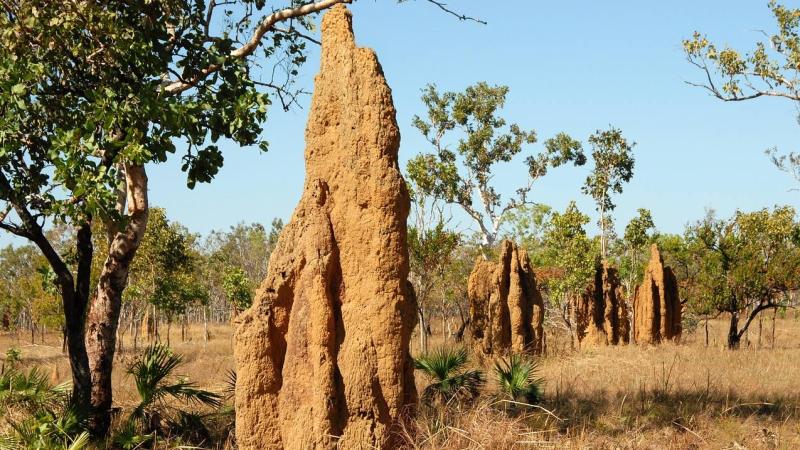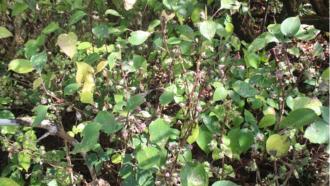
Among the captivating birds, insects and other animals of the Western Ghats of India, are a family of drab yet diverse flies, called rhiniid flies. Less than a decade ago, Rhiniidae, the family name of these flies, was catergorised as a separate group – distinct from other similar flies... Today, there is still very little known about what role these tiny flies play in a thoroughly intricate ecosystem like that of the Western Ghats, but if history is any indication, we know that every single organism has a unique duty to fulfil.
So far, most studies on these flies have tried to understand the structure of these flies and only a handful have focused on their behaviour. “Rhiniidae is a relatively new family, and very little is known about most of them when they are alive”, says Mr Bernal J. Arce, a graduate researcher from the University of Guelph, Canada. In a recent study, Mr Arce and his collaborators at the University of Guelph, Punjabi University, Patiala and the Natural History Museum of Denmark have found some fascinating facts about the termite-eating behaviour of some rhiniid species.
Trekking deep into the forests of Kerala’s Wayanad district, the researchers delved into the association of rhiniid flies and disturbed termite mounds—a relatively neglected subject. “We added something new to a relatively obscure species”, says Mr Arce, thrilled about their findings on how these flies get into termite mounds to lay their eggs and their larvae.
“Most rhiniid flies eat protein-rich foods, such as termite larvae, locust eggs and ants, and as adults, they drink flower nectar and similar sugar-rich foods to power their flight”, explains Mr Arce about what these flies eat. Perhaps, in the ecosystem, these scavenging flies recycle organic matter and keep termite populations in check.
Over time, some species of these flies have aced the game of infiltrating termite mounds and laying their fully-developed larvae on termite hills. When these larvae grow, they have a scrumptious meal waiting to be gobbled—the unsuspecting termites in the mound. A few others follow a different strategy. Instead of parking their larvae, they lay matured eggs that hatch early.
The researchers studied the flies in seven sites at Fringe Ford in Wayanad—about six containing termite mounds and one devoid of any termite activity. They dug up the termite mounds in these sites and looked for the rhiniid flies that are drawn to them. The first of the flies to come was Stomorhina procula—a rhiniid fly that deposits fully developed larvae in termite nests. The researchers observed how the female flies scraped their legs through the loose soil and swiftly buried themselves in the mound to unload their larvae.
“What got us excited was to see them laying their live larvae. There were some records of this happening within Rhiniidae, but to my knowledge nobody had published clear pictures of it yet,” shares Mr Arce, with excitement. These flies also seemed to be attracted to sites that specifically showed termite activity.
In contrast, another visitor, Idiella euidielloides was full of apathy. Although the adult flies were ubiquitous, hovering along the disturbed paths, they did not feed, mate or deposit eggs or larvae in the mounds. “We can’t rule out that they eat termites, but we can’t confirm it either”, asserts Mr Arce, “All we saw them do was gather in numbers when we disturbed termite mounds”. The researchers suggest that the flies perhaps displayed behaviours unrelated to termite-eating or could’ve been merely rejecting the sites as unsuitable!
The most intriguing behaviour of all the flies was that of Borbororhinia bivittata. While this fly was found mating and depositing eggs in some disturbed termite nests, it seemed to leave out specific sites altogether decisively! On a closer look, the researchers saw that ants infested the rejected sites. Perhaps they sensed the presence of their predators—ants in this case—and avoided those areas? Likely so, for these flies perched around another disturbed, ant-infested mound, but never mated or deposited eggs.
The researchers also observed the scavenging behaviour of both Borbororhinia bivittata and Stomorhina procula larvae isolated and feeding on dead termites that they were provided. However, the larvae of the latter did not grow into the pupal stage, presumably because they were unable to withstand the sub-optimal conditions of a closed environment.
The study is also the first to publish clear pictures of the scavenging behaviour of these flies. “It is really cool that there’s enough flexibility in the life strategies of the rhiniids that some species selected for live births while others kept traditional egg laying”, remarks Mr Arce.
A thorough understanding of the contribution of rhiniids to the ecosystem adds vital clues to the jigsaw puzzle that is the Western Ghats and helps to develop well-informed conservation strategies. “Many insect groups like the Rhiniidae are never considered when decisions about conservation are made. They still need much research, especially if we want to understand the part rhiniids play in their environment”, signs off Mr Arce.
This article has been run past the researchers, whose work is covered, to ensure accuracy.






